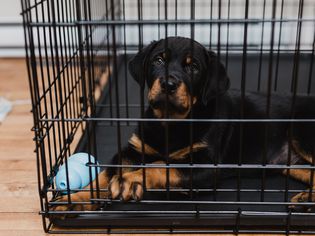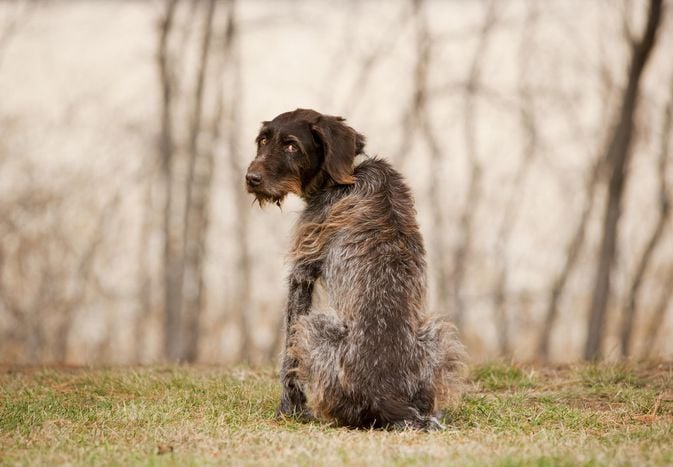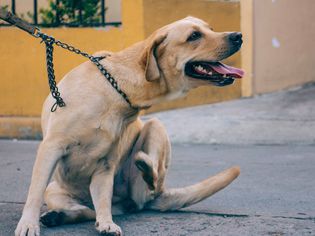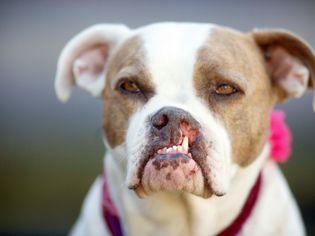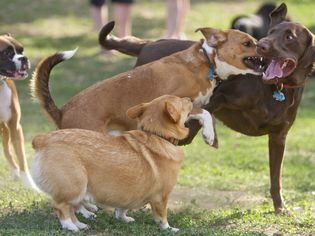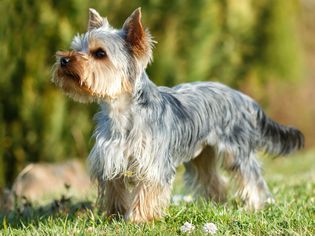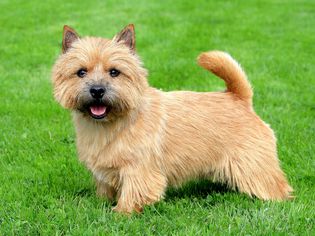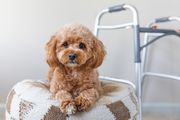The Bernese mountain dog, affectionately called “Berner,” is a large working dog breed from Switzerland who makes a loyal, loving companion for adults, children, and other pets.
Beautiful tri-colored Berners are playful and energetic but not exhausting. Although they are a big breed, they’re gentle giants, and aren't as intimidating as some other large dogs, thanks to their happy expressions and generally good natures. As lovely as they are, Bernese mountain dogs aren't for everyone. The breed features its fair share of barkers, and their thick coats shed plenty of fur so you'll need to prepare for regular grooming sessions.
Learn all about the Bernese mountain dog, including their care needs, temperament, and more.
Breed Overview
GROUP: Working
HEIGHT: 23 to 26 inches (female); 25 to 27.5 inches (male)
WEIGHT: 70 to 95 pounds (female); 80 to 115 pounds (male)
COAT: Thick, medium-length double coat
COAT COLOR: Black, rust, and white or black, tan, and white
LIFE SPAN: 7 to 10 years
TEMPERAMENT: Gentle, even-tempered, loyal
HYPOALLERGENIC: No
ORIGIN: Switzerland
Characteristics of the Bernese Mountain Dog
Bernese mountain dogs typically have a good-natured personality. Hallmarks of their temperament include their gentle nature and eagerness to please, which make them excellent house dogs. With proper socialization, they can be open to meeting strangers and are quite affectionate with their families. They make good watchdogs, though some can bark more than you might desire.
Berners are intelligent dogs who are quite trainable, and while any dog should undergo thorough obedience training in puppyhood, it is especially important with a large breed like the Bernese mountain dog. Although gentle, these dogs can be playful and exuberant, and their size means they might accidentally knock over a child, or even an adult, should they jump up in greeting or get too energetic while playing.
Because of their outgoing personalities and devotion to their family, Berners don't like to be left alone for too long. This isn't the right breed for you if you work long hours and expect a dog who can remain happily alone at home.
| Affection Level | High |
| Friendliness | High |
| Kid-Friendly | High |
| Pet-Friendly | High |
| Exercise Needs | Medium |
| Playfulness | Medium |
| Energy Level | Medium |
| Trainability | High |
| Intelligence | Medium |
| Tendency to Bark | Medium |
| Amount of Shedding | High |
History of the Bernese Mountain Dog
The Bernese mountain dog originated in Switzerland around the city of Berne, for which it is named. Today, the Berner is one of four varieties of Swiss mountain dog, set apart by their longer, silkier coat. The other three varieties are the Greater Swiss mountain dog, the Entlebucher mountain dog, and the Appenzeller Sennenhund.
In the 1800s, these dogs were used to drive livestock, guard farms, and pull heavy loads. They also were loving companions to their families. The breed declined in popularity toward the end of the 1800s because machines replaced much of their work. However, that spurred the formation of a Swiss club to preserve the breed and revive its popularity.
Berners arrived in the U.S. in the early 1900s. And the American Kennel Club first recognized the breed in 1937. They’re now regularly one of the most popular dog breeds in the U.S.—No. 21 on the AKC’s list of the most popular dog breeds of 2023.
Bernese Mountain Dog Care
Bernese mountain dogs require a moderate amount of exercise, along with consistent training and socialization, to be happy and healthy dogs. Their grooming is fairly straightforward, though you should be prepared for lots of loose fur and occasional strings of drool.
Exercise
Berners have a moderate energy level, but they need space for their big bodies to move and play. So you'll probably need a yard.
Aim for a minimum of 30 minutes of moderate-intensity exercise every day, such as:
- Walks
- Hikes
- Games of fetch
- Trips to the dog park
Berners are quite athletic dogs and can compete in canine sports—those challenge them mentally and physically, and the competitions can be lots of fun for you both. These dogs even enjoy pulling young children in a cart.
Examples of athletic activities include:
- Obedience
- Agility
- Tracking
- Carting
If you live in an apartment or a home without a yard, then it is even more important to make sure your Bernese mountain dog enjoys daily outdoors time or other forms of activity (like doggy daycare). Your Berner will likely love playdates with fellow friendly, outgoing dogs, too, as long as they are matched in size and strength.
Grooming
The Berner has a double coat (a shorter undercoat paired with a longer outer coat) that repels dirt and insulates them from the cold, snowy Swiss winters. They are prone to overheating in the summer, so should be kept inside during really hot days.
Berners shed a lot, especially when the weather changes in the spring and fall, so this breed is ideal for those who don’t mind fur around the house. Brush your dog thoroughly at least weekly—daily during shedding season—to remove loose fur and prevent mats and tangles.
Begin brushing your Berner as a puppy so they become accustomed to regular grooming; many dogs will even look forward to their grooming sessions if you make it a habit when they are still young.
Bathe your dog roughly every month, depending on how dirty they get. At least check to see whether they need a nail trim monthly as well. Also, examine your dog's ears weekly to see whether they need cleaning. Look for dirt, redness, swelling, or smell in the ears. And dry their ears thoroughly if they get wet, such as after swimming or after a bath. Dogs with floppy ears, like the Berner, can be more prone to ear infections than dogs with upright ears.
Finally, many Bernese mountain dogs drool little, but those with loose jowls can drool quite a bit. That slobber can end up on the dog, in the house, and on you. So if you have a drooler, keep a cleanup cloth on hand to prevent the drool from embedding in your dog's fur. And as with any dog, try to brush your Berner's teeth regularly to prevent the buildup of tartar that can lead to gum disease.
Training
Bernese mountain dogs are bright and eager to please, which helps make training easy. Start basic obedience and socialization when your dog is a puppy, teaching them to sit, stay, and lie down on cue. This is especially important for such a large breed like a Berner, as adults are powerful and difficult to control if they haven’t learned their manners. Aim to expose your dog to different people, other animals, and various situations to boost their comfort and confidence.
Berners respond well to consistent positive reinforcement training techniques, such as clicker training. They should be trained to walk on a leash and not jump on people, especially since they’re so large.
Like many other large breeds, Berners take longer to reach full physical and mental maturity, so always be patient with your pet and remember that multiple short training sessions each day—just five minutes or so—are more effective than one long session.
Common Health Problems
Like other large breeds, Bernese mountain dogs have relatively short lifespans (seven to 10 years), which is something to take into consideration before deciding to bring one home. Berners are prone to certain conditions, including:
- Hip and elbow dysplasia: These are genetic abnormalities in the development of those joints. These conditions are inherited, so they can’t be prevented, but your vet can provide guidance on treatment.
- Blood disorders: Von Willebrand's disease, in which the blood doesn’t clot properly, is one of the blood disorders that can affect this breed.
- Cancer: The most common cancer that affects this breed is histiocytic sarcoma—symptoms depend on the part of the body affected, and can include lethargy, weight loss, and decreased appetite, among others.
- Progressive retinal atrophy: This is a degenerative eye disease that can lead to blindness.
- Bloat: This is a potentially lethal condition in which the stomach bloats and can twist—often from eating too quickly. A surgery called gastroplexy can be done to prevent this.
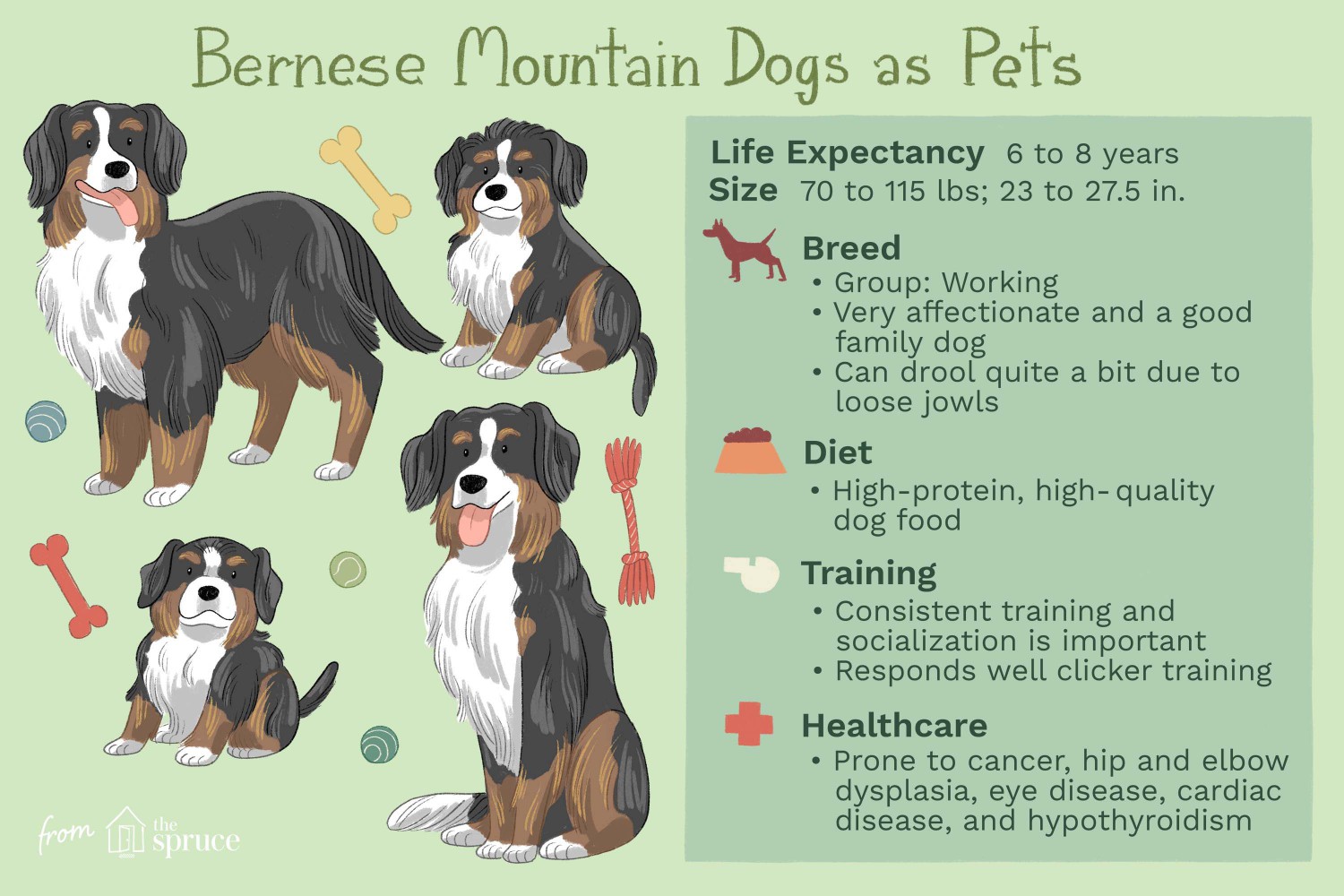
The Spruce / Kelly Miller
Diet and Nutrition
Always have fresh water available for your dog, and select a quality, nutritionally balanced canine diet. Berner puppies especially will benefit from a diet made for large breeds. These diets contain the proper nutrition to encourage slow and steady growth to help prevent joint problems and other issues.
Most people feed meals twice per day. Avoid using elevated bowls, as they could increase the risk of bloat; instead, use slow feeder bowls.
Discuss the diet and quantity with your veterinarian to ensure your dog is eating properly. Make sure treats and extra food don’t lead to your dog becoming overweight. Excess weight can put a great deal of stress on these big dogs’ joints and lead to other health problems.
Where to Adopt or Buy a Bernese Mountain Dog
Check local animal shelters and breed-specific rescue organizations for a Berner in need of a home. If you’re looking for a breeder puppy, expect to pay around $2,000 to $3,000, though this can vary depending on bloodline and other factors.
To find a Berner, check out:
- Bernese Mountain Dog Club of America Breeder Directory
- BMDCA Rescue & Rehome
Bernese Mountain Dog Overview
While they're loving, friendly dogs, Bernese mountain dogs aren't for everyone. Factors like their size, exercise needs, and grooming needs can help you decide whether you should bring home a Berner.
Pros of Bernese Mountain Dogs
- Excellent family pet
- Loyal, devoted
- Energetic but not exhausting
- Trainable
Cons of Bernese Mountain Dogs
- Short life span
- Heavy shedding
- Some drool
- Heavy coat isn't good for warm climates
- Best to have access to a yard
More Dog Breeds and Further Research
Before you decide on a Bernese mountain dog, be sure to do plenty of research. Talk to other Berner pet parents, vets, reputable breeders, and rescue groups to learn more.
If you’re interested in similar large breeds, check out:
- Great Pyrenees
- Newfoundland
- Saint Bernard
There’s a whole world of potential dog breeds out there—with a little research, you can find the right one to bring home!
- Is a Bernese mountain dog high maintenance?
Yes, the Bernese mountain dog is a high-maintenance breed because of their shedding and size. These dogs need frequent brushing and the drool-prone ones need a slobber rag. They're also big enough that you have to make sure they're not knocking over people or furniture. It's a lot to keep an eye on.
Why is a Bernese mountain dog so expensive?Berner puppies are expensive—costing $2,000–$3,000 or more—because responsible breeders have to screen for health issues, pay for vet visits, and set up the actual breeding, according to the Bernese Mountain Dog Club of America. Plus, some dogs may come from well-regarded bloodlines, driving the price up even further.
Why shouldn't you get a Bernese mountain dog?Berners are great dogs, but they're not for everyone. You shouldn't get a Bernese mountain dog if you don't have access to a yard or frequent exercise; if you're allergic to pet dander; if you're not at home frequently; and if you don't have time to train the dog.

